Using Earned media for B2B lead generation
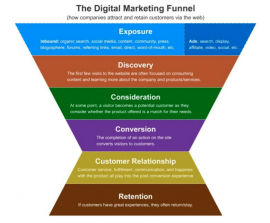
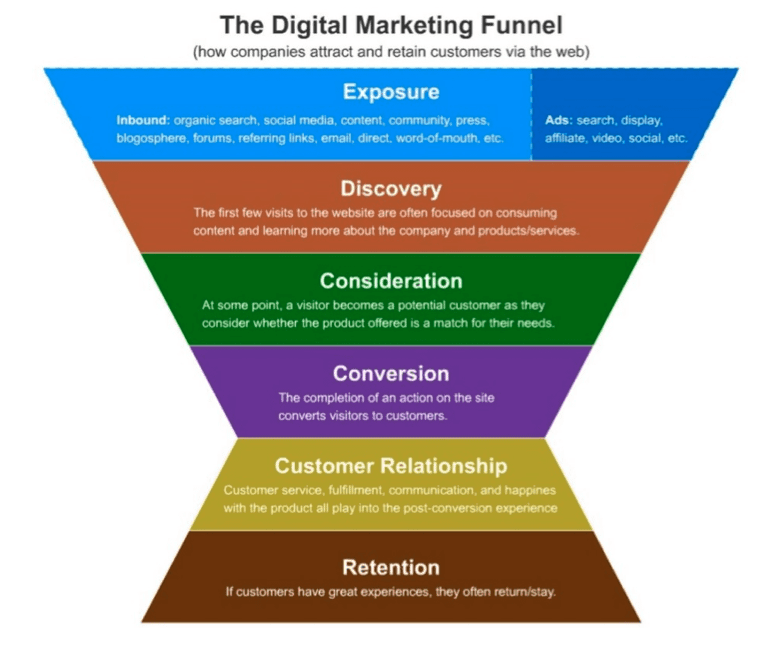
Strategy, tactics and ideas to consider as part of a winning lead generation strategy
Generating consumer interest and enquiries is a primary objective for B2B businesses, something backed up by a recent study from the Content Marketing Institute which states that lead generation (85%) and sales (84%) will be the most important goals for B2B content marketers over the next 12 months.
In my previous post from November last year I explored the rationale for using content marketing for B2B lead generation and provided some case studies to demonstrate some best practices. In this post, I’ll look in more detail at how earned media can be used to support B2B companies’ lead generation objectives.
Earned media as part of an integrated strategy
As we’ll see, earned media undoubtedly provides an effective set of tactics for lead generation and is associated primarily with generating interest at the top of the inbound marketing funnel:
Source: Moz – Building your inbound marketing funnel
However, earned media shouldn’t operate in a vacuum and should form part of an integrated paid/ owned/ earned media marketing strategy to assist the lead generation process from start to finish, something highlighted in Hubspot’s inbound methodology:
However, earned media shouldn’t operate in a vacuum and should form part of an integrated paid/ owned/ earned media marketing strategy to assist the lead generation process from start to finish, something highlighted in Hubspot’s inbound methodology:
Source: HubSpot B2B
Earned media plays a role during the ‘Attract’ stage of a lead generation programme but can only be effective if it is supported by high quality owned (e.g. website) and paid (e.g. paid search, display) media to bring everything together.
Focus on the ‘holy trinity’
There is a wealth of different tactics available to B2B marketers for lead generation, many of which span paid, owned and earned model media:
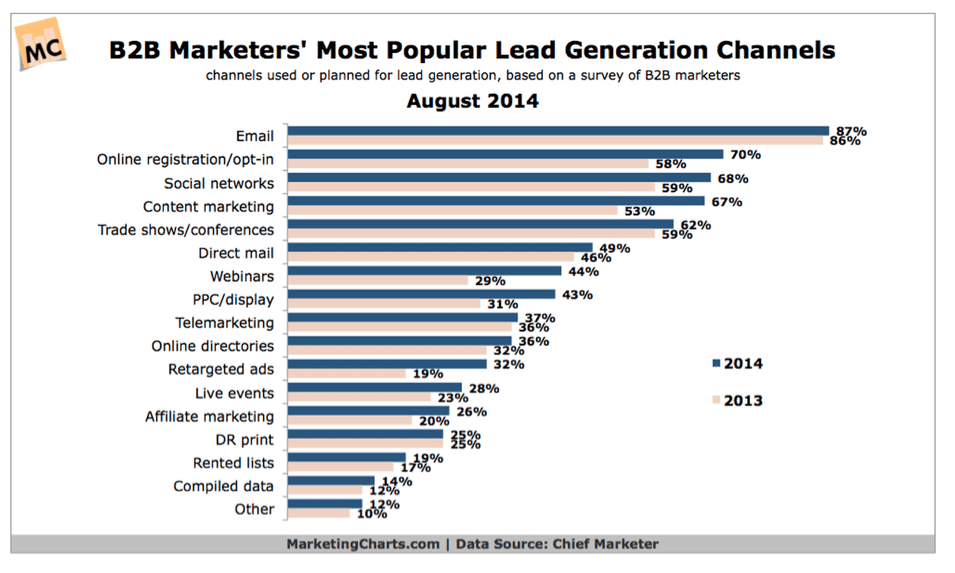
However, when looking specifically at earned media marketing there is no better foundation to start with than the ‘holy trinity’ of search, social and content:
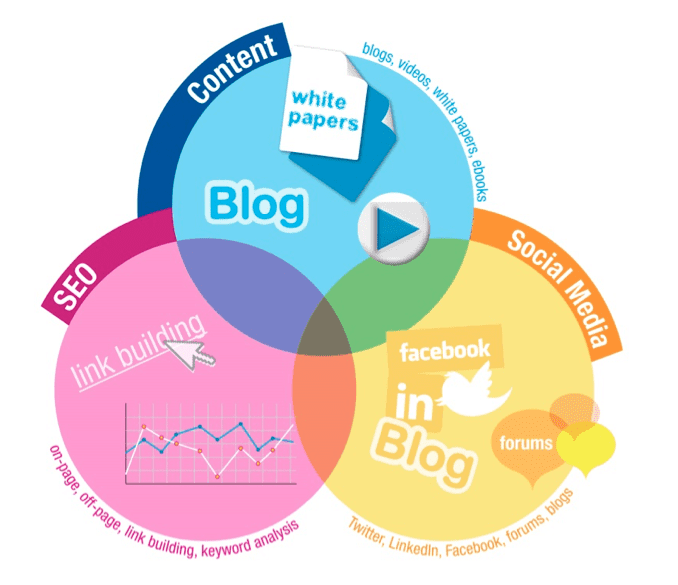
Each of these earned media elements overlap with one another to provide B2B marketers with a suite of tactics to develop strong thought leadership and showcase their expertise in order to attract interest and enquiries at the earlier stages of the lead generation process.
Develop a content marketing plan
Whilst earned media is unlikely to convert traffic immediately, it’s important to attract the right type of traffic with lead potential. This process starts with content and involves giving people a genuine reason to click through to a website to find out more.
Understand the market
A content marketing plan provides marketers with a roadmap of content that can be created at different times of year for various buyer types/ personas. By having a thorough understanding of your ideal prospects and customers, you’ll have a better indication as to the type of content that will resonate and attract interest.
Outline content options
The type of content you provide will be dependent on your business goals and objectives. Smart Insights’ Content Marketing Matrix (available for download here) provides a useful visual guide to the different content options available:
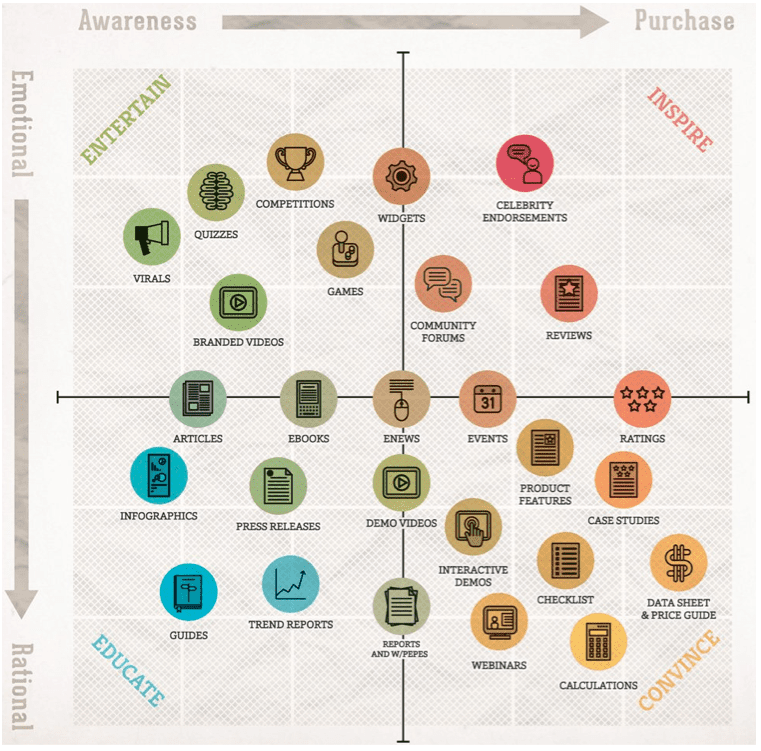
For marketers looking to generate awareness as part of a lead management programme, I would recommend focusing primarily on options that educate and convince. B2B prospects are often looking to answer complex questions or find solutions to very specific business problems and therefore ‘help’ rather than ‘entertainment’ or ‘inspiration’ is likely to be most effective.
Create a content calendar
The content calendar is where the insight and ideas from the previous stages come together to form an actionable plan. This stage involves putting together all the necessary detail to begin creating content along with an idea of how the content will be distributed and discovered.
Quick questions
Some quick questions to consider for content marketing planning in respect to lead generation include:
• Objective – what are we ultimately looking to achieve as a result of our content efforts?
• Buyer personas – who is the target audience for the content?
• Content format – what format works best for the for objective and target audience?
• Call to action – what do we ultimately want the visitor to do in order to capture lead details?
• Distribution/ promotion – how will content be distributed and promoted (both organically and via paid channels)?
Further reading: Smart Insights B2B content marketing hub
Enhance visibility with SEO
If content is king then marketing is queen. No matter how good your content is, it has to be found in order to spark action.
Search engine optimisation is one of the most effective forms of earned media for content discovery with billions of searches made worldwide every day and organic search is particularly effective as it’s intent-driven, i.e. people who use search engines are actively seeking content to solve a problem.
Organic search therefore gives B2B marketers a great opportunity to be found for content that provides real value and gives prospects a reason to find out more.
The changing nature of modern SEO
It’s worth noting that the nature of SEO has evolved over the last five years and it’s important that marketers stay up-to-date with modern trends to ensure best practices are followed. There is now an increased importance on content quality, user experience (including factors such as site speed and accessibility), mobile and local SEO that B2B marketers should consider.
One ranking factor that has remained consistently important is the number of (quality) inbound links to a website. This is something that B2B marketers can use to their advantage, supported by online PR, to get good quality content seeded on external sites to increase positive coverage as well as build the authority of their owned media properties.
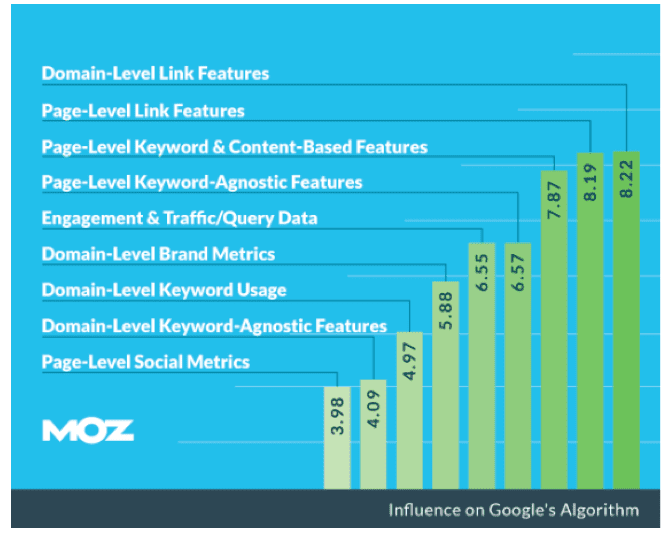
Source: Moz Google Algorithm ranking factors
SEO and content marketing should work in harmony
How can B2B marketers improve their off-site SEO outreach efforts? By creating content worth sharing and linking back to. And the content marketing plan outlined in the previous section provides search marketers with a roadmap of content to optimise and distribute.
An SEO approach gives B2B marketers valuable insight that can be fed into the content planning process to ensure that the content is given the best opportunity to appear prominently within organic search.
Quick questions
Some quick questions to consider for SEO in respect to lead generation include:
• Keyword research – what themes and subjects are people actively searching for that can inform the content planning process?
• On-site SEO basics – are other key pages of the site (e.g. including landing pages and information sections such as the ‘About’ page) optimised to bring in potential leads?
• Analysis and insight – what content has worked previously (rankings and traffic)? What has generated interest? What has led to conversions and sales?
Further reading: Smart Insights B2B content marketing hub
Distribute thought-leadership with social media
As mentioned at the outset, earned media can be particularly effective at showcasing thought-leadership and expertise. The content marketing and SEO elements explored above demonstrate how this can be created, established and discovered.
The next stage is promotion. In order to amplify discovery, content needs to be distributed strategically to maximise reach and social media is an excellent channel for this – if used correctly. A B2B brand with a strong presence on Facebook, Twitter, YouTube and particularly LinkedIn has an opportunity to seed content across a spectrum of associated social channels and drive awareness.
Organic reach is decreasing
Whilst I always advocate the creation of a brand presence on different social channels, it’s important that businesses follow best practice and build a presence based on sound business principles.
For a number of years now organic reach within many social channels, particularly Facebook, has been declining:
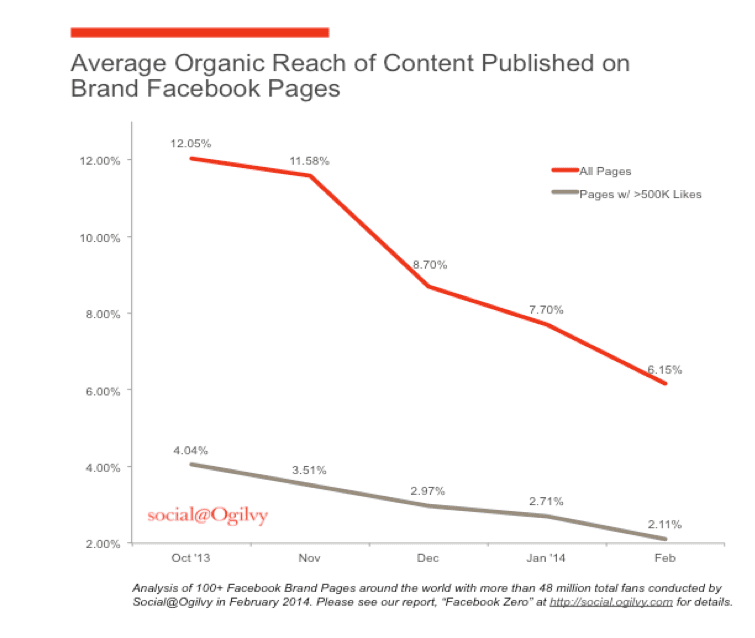
The decline in organic reach means that the content brands create and distribute within social channels has to be highly relevant and timely to make an impact and generate an earned response. It also means that it’s become increasingly necessary to use paid media to fuel earned media initiatives so it’s worth considering this during any budget planning activity.
Focus on LinkedIn
Whilst a B2B company has the freedom to create a presence on any social network, it’s worth focusing on the channels that will offer the best potential for success rather than overextend across multiple platforms that bring limited benefit.
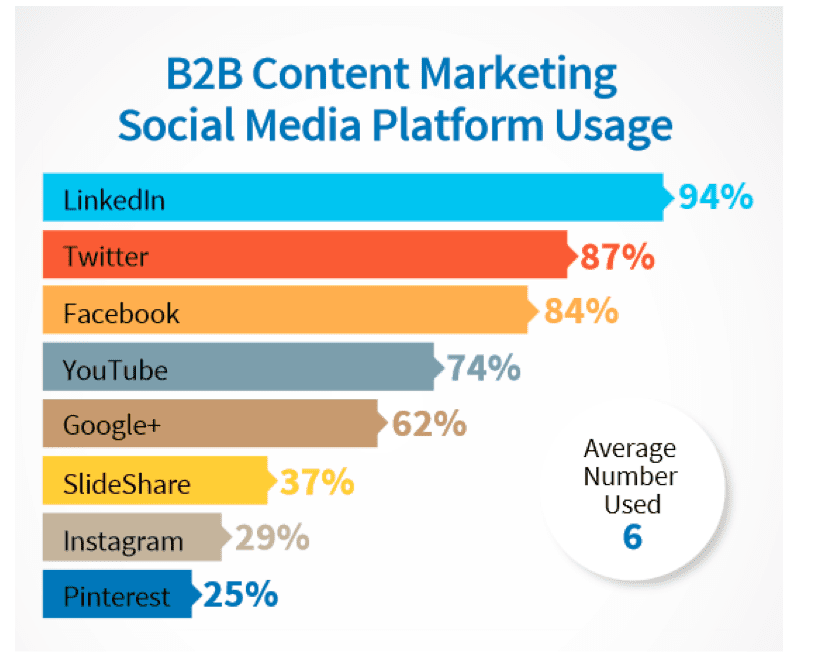
Source
LinkedIn is a natural fit for B2B companies, with research from the Content Marketing Institute indicating that 94% of B2B marketers use LinkedIn as part of their social media marketing efforts.
For a company looking to build a presence around expertise and thought-leadership, LinkedIn offers a number of advantages:
• As with most social networks, LinkedIn enables the creation of brand or company pages to establish an ‘owned’ presence or hub within the channel
• LinkedIn is made up of professionals, giving B2B marketers the opportunity to reach industry prospects and build contacts and relationships
• Groups enable individual thought-leaders to generate conversations, share knowledge and demonstrate expertise within their respective fields
• Publishing features such as Pulse give thought-leaders the opportunity to reach a wide potential audience with specialist content
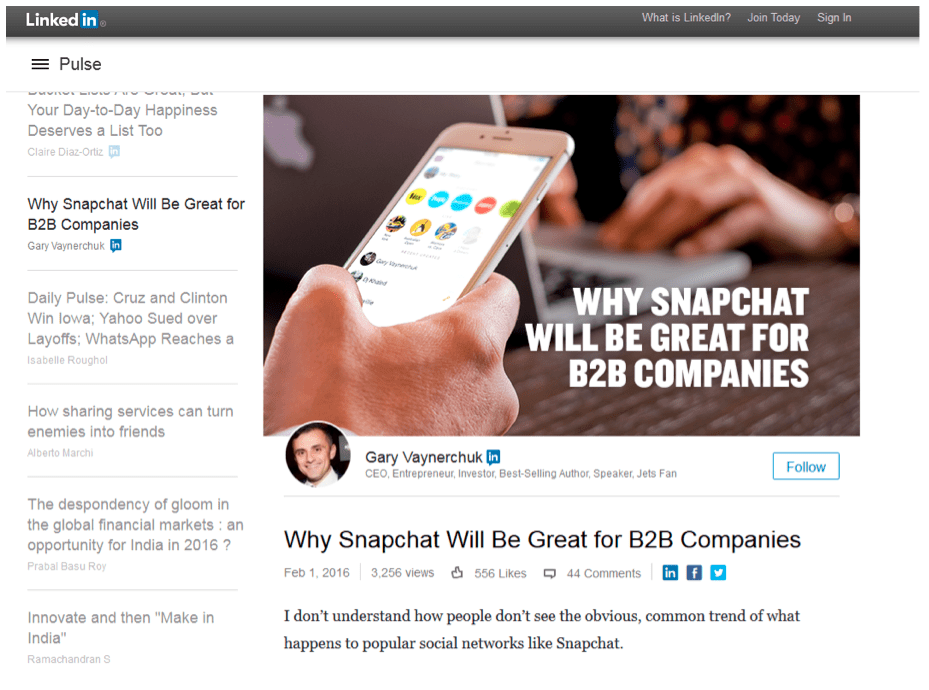
Quick questions
Some quick questions to consider for social media in respect to lead generation include:
• Know your audience – who are you trying to reach and why? Is your target audience at the organisational (solving a company problem) or buyer (convincing a key decision-maker) level?
• Curate a meaningful social presence – what channels are most appropriate for your message, content type and target audience?
• Combine paid and earned – what scope and budget do you have to use paid media selectively to boost content to reach influencers and generate awareness?
Summary and conclusions
The ‘holy trinity’ of search, social and content provide B2B marketers with a foundation on which earned media tactics can developed as part of a lead generation process. Each element can work with one another to provide a holistic approach and should be integrated as part of a wider paid/ owned/ earned model.
A big benefit of using earned media is that it provides B2B marketers with a range of tactics that can be tested and deployed with relatively little risk and low barriers to entry (anyone can set up a LinkedIn page, start a blog or create a whitepaper). And analysis and insight will help identify what is working and resonating with the target audience to offer a guide as to what could be ‘amplified’ using paid media to generate further awareness and additional qualified traffic and leads to a website.
From our sponsors: Using Earned media for B2B lead generation



